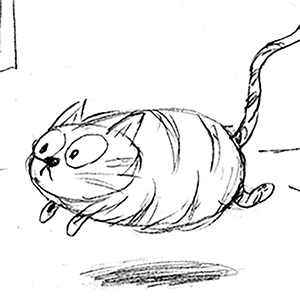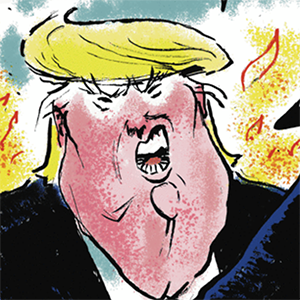Gentrification isn’t inevitable − it can hinge on how residents view their neighborhood
Published in Political News
Gentrification has become a familiar story in cities across the United States. The story line typically goes this way: Middle- and upper-income people start moving into a lower-income or poor neighborhood. Housing prices rise in response, and longtime residents and businesses are driven out.
As the U.S. population becomes increasingly urban, gentrification can seem inevitable. However, scholars have found that it’s actually pretty rare.
For example, a study by the nonprofit National Community Reinvestment Coalition that examined neighborhood change from 2000 through 2013 found that most low- and moderate-income neighborhoods across the United States did not gentrify during that period. Just seven cities – New York, Los Angeles, Washington, Philadelphia, Baltimore, San Diego and Chicago – accounted for almost half of all neighborhood gentrification nationwide.
Why is gentrification less common than many people fear? In our book, “A Good Reputation: How Residents Fight for an American Barrio,” we argue that conflicts over neighborhood reputation are an important factor.
We examined disputes among residents of Northside, a predominantly Latino neighborhood, or barrio, in Houston, over how their neighborhood was perceived. We found that those who thought outsiders stigmatized the barrio, or who stigmatized it themselves, avoided engaging with the neighborhood, its institutions and its residents. This group supported measures that would facilitate gentrification, such as monitoring local bars to file nuisance complaints.
By contrast, those who perceived the barrio as a welcome, desirable space worked to cultivate the neighborhood’s institutions and connect its people, pushing back against attempts to gentrify the area.
Common understandings of gentrification and urban development often frame these urban processes as natural, linear and even inevitable for low-income neighborhoods. The argument goes that once you see a new Starbucks, or a light rail station in the case of Northside, gentrification is sure to follow.
Based on our research, however, we argue that when politicians, developers and even residents themselves attempt to develop or redevelop marginalized urban neighborhoods, they spur neighborhood conflicts that, in turn, can greatly influence the redevelopment process.
Northside is one such neighborhood. Located just north of downtown Houston, it has been majority Latino for more than 60 years. It has also been a high-poverty area, with 23% to 38% of its residents living beneath the federal poverty line over this time period.
About one-third of its residents are foreign-born, many of them originating from Mexico or Central America. But most Latino Northsiders are second-, third- or later-generation Mexican Americans or Latino Americans.
The neighborhood consists mainly of single-family homes on small, densely packed urban lots. Some streets have sidewalks and covered drainage systems, while others have open ditches and lack sidewalks. Although the METRO red line train travels along the barrio’s western border and a few busy thoroughfares crisscross the neighborhood, much of the area has a small-town, quiet, residential feel.
As we describe in our book, we found two widespread and conflicting views of Northside among its residents. Interestingly, these views did not easily map onto individual characteristics, such as racial identity or class. People would sometimes change their viewpoints depending on the conflict in question.
One group wanted to cleanse the barrio of what its members saw as negative features, transform the area and prepare the way for gentrification to occur. The other group was intent on celebrating the barrio as it already was and on preserving its character and supporting its residents.
Residents who wanted to remake Northside often believed that it had too many features that they felt were associated with Black or low-income people, such as public housing, cantinas or bars, and services for people without homes. For example, one woman we spoke with cited neighborhood cantinas and housing shelters as evidence that Northside was dangerous.
These Northsiders wanted to purge and clean the neighborhood to improve what they perceived as its marred image. They sought to remove facilities, such as a Salvation Army shelter, which they believed attracted undesirable people; called for increased police presence in the neighborhood; and avoided local places such as parks and grocery stores, often driving to other neighborhoods instead.
They also attempted to curate what they viewed as respectable behavior, through steps such as installing video cameras and calling on residents to report neighbors whom they believed were dumping trash or failing to neuter and spay their pets.
In contrast, other residents believed that their neighborhood was a welcoming and desirable place. They were proud of its parks, churches, public schools and Mexican restaurants, and they spoke of pivotal moments in Northside’s past to argue for its desirability in the present. One such event was an uprising at Moody Park in 1978 that spurred reforms in the Houston police department and capital improvements to the park.
These residents hosted parties, exercised at local parks and volunteered with public schools and Catholic parishes. Many regularly participated in neighborhood development and nonprofit meetings, and they objected when other speakers cast Northside as a stigmatized place and its residents as the cause of barrio ills.
They also defended Northside against what they saw as threats to its quality of life. As one example, residents sued the owners of White Oak Music Hall, a 5-acre, three-stage concert venue that opened in 2016 on the western edge of the neighborhood. Plaintiffs argued that loud music was interrupting their children’s sleep and decreasing their property values. They won important concessions in a 2018 settlement, including caps on the number of outdoor concerts, installation of sound-monitoring equipment and limits on the number and duration of concerts on school nights.
Ultimately, we found that Northside did not gentrify because the conflict between these disparate views of the neighborhood blocked or slowed large-scale redevelopment. Some residents’ attempts to protect and preserve the barrio interrupted developers’ plans – for example, by using Houston’s Code of Ordinances to block the subdivision of existing lots. Other actions, such as the lawsuit against White Oak Music Hall, checked developers’ influence in the area.
Although residents’ efforts to prevent redevelopment did not constitute a full-blown, organized social movement, people who valued Northside as it was successfully challenged the idea that it was a dangerous and unattractive place that needed to be remade, and they worked to preserve the place they called home.
Other researchers have examined similar struggles in cities including Boston, Los Angeles and Chicago. We think that paying attention to these conflicts in cities of all sizes can provide a deeper understanding of why gentrification succeeds – or, more commonly, why it fails.
This article is republished from The Conversation, a nonprofit, independent news organization bringing you facts and trustworthy analysis to help you make sense of our complex world. It was written by: Elizabeth Korver-Glenn, University of North Carolina at Chapel Hill and Sarah Mayorga, Brandeis University
Read more:
How Detroit techno is preserving the city’s beating heart in the face of gentrification
Are rents rising in your Philly neighborhood? Don’t blame the baristas
Atlanta’s BeltLine shows how urban parks can drive ‘green gentrification’ if cities don’t think about affordable housing at the start
The authors do not work for, consult, own shares in or receive funding from any company or organization that would benefit from this article, and have disclosed no relevant affiliations beyond their academic appointment.





























































Comments